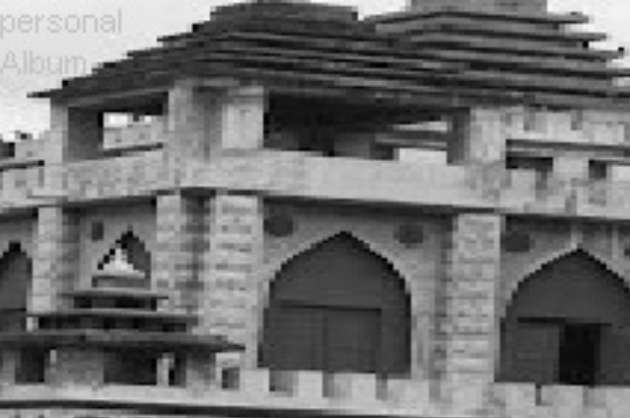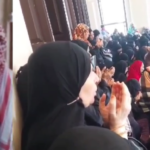Anupama Nair
www.mediaeyenews.com
Our great Prime Minister Modi inaugurated the Amrit Mahotsav or celebration of India’s 75th year of Independence. We will be celebrating this event till 2022. I am going to write a feature on all those great men and women who fought against foreign invasion not just against the British. Today I am going to write about the great but unknown Veera Pandyan who gave his life to save his kingdom from the British East India. He waged a war with the British six decades before the Indian War of Independence which occurred in 1857. It is my mission in life to educate my countrymen about unknown people who gave their life so we could live in “that heaven of freedom”. The ultra-left-oriented curriculum ensured that only Mughals and invaders are remembered, but people like Velu Thampi, Velu Nachiyar and Pazzasi Raja were buried in the annals of history and their aim we forget our great history, religion and culture and they have succeeded to a large extent. Let us do our bit to reverse that.
To understand the story of Veera Pandyan, I need to take you back many centuries before. India was ruled by the cruel Mughals. It is a credit to the British, how the merchants who came to do trade with India, within 300 years became the masters of the entire land from Khyber to Chittagong and from Kashmir to Comorin (now Kanya Kumari), i.e., the entire Sub-Continent. The English East India Company was formed by merchants of England to trade with Asia and India the “golden bird” in particular and America. It was formed by the Royal Charter on New Year’s Eve in 1600. They landed in the Indian subcontinent on August 24, 1608, in Surat (Gujarat).
The Battle of Plassey (1757) and Battle of Buxar (1764) , smoothened their path to conquer the sub-continent. Robert Clive became the first Governor General of British India. By spinning a web of deceit, and many laws like Subsidiary Alliance (Lord Wellesley) and Doctrine of Lapse (Lord Dalhousie), they succeeded in ruling the entire sub-continent by 19th century. Jawaharlal Nehru in his book Discovery of India quoted “British rule in India had an unsavory beginning and something of that bitter taste has clung to it ever since”.
Veera Pandya was also known as Veera Pandya Kattabomman and his ancestors earlier migrated from Andhra Pradesh to settle in a village called Salikulam to avoid marital alliances with their enemies. The first of the Kattabomman family who settled at Salikulam was appointed as a Chief Guard to the then King Sri Jaga Veera Pandyan of Veera Pandyapuram (Ottapidaram) recognizing his bravery. By his loyalty and devotion, he gained the confidence of the King and became the most trustworthy guard of the king. King Jagaveera Pandyan, who had no heir as a successor, crowned Kattabomman as his successor. In memory of the King, Kattabomman christened himself as Jaga Veera Pandya Kattaboman. He was a great ruler. It is said one day when was on a hunting mission, he saw a very starling scene. A hare was chasing four hounds. He considered the land as a land of valor and constructed a fort on that soil. He named the fort as "Panchalamkurichi" in memory of the King Pancha Pandyan who was the grandfather of King Jaga Veera Pandyan.
Veera Pandya Kattabomman was born to Jaga Veera Kattabomman and Arumugathammal in 1760. He had two younger brothers Dalavai Kumarasami and Duraisingam. He was fondly called “Karuthaiah” or the “black prince”. He became the king of Panchalankurichi in 1790.
After the collapse of the Vijaya Nagara Empire in the 16th century, their governors in Tamil Nadu declared independence and established independent kingdoms and the old Pandya state came to be governed by Naickers Their rule for over 200 years came to an abrupt end in 1736 when Chanda Sahib of Arcot seized Madurai from the last queen of Madurai in an act of treason. After Chanda Sahib was killed after the Carnatic Wars and then the territory came under the Nawab of Arcot. The Nawab of Arcot had expensive tastes and had to borrow huge sums of money from the British East India Company.
The Nawab of Arcot gave the British what they had always dreamt of, the right to collect taxes and levies from the southern region in lieu of the money he had borrowed. The East India Company took advantage of the situation and plundered all the wealth of the people in the name of tax collection. Kattabomman refused to pay his dues and for a long time refused to meet Jackson the Collector of the East India Company. Finally, he was forced to meet Jackson at Ramalinga Vilasam, the palace at Ramanathapuram. The meeting however was violent and ended in the killing of Deputy Commandant of the Company’s forces, Clarke. Kattabomman and his men fought their way to freedom and safety, but Thanapathi Pillai, Kattabomman’s secretary was unfortunately taken, prisoner.
The new Collector of Tirunelveli wrote to Kattabomman and called him for a meeting. Kattabomman however refused, mentioning the extreme drought conditions for the delay in the payment of dues and also demanded that all that was robbed by the Company be returned to him. Kattabomman refusal to meet the Collector ended in a war. A war broke out under Major Bannerman, and the British army stood at all the four entrances of Panchalankurichi’s fort. Unfortunately for the British, when the fort’s southern doors opened, Kattabomman and his forces audaciously attacked the forces and killed their commander Lt. Collins. The British after suffering heavy losses decided to wait for reinforcements and heavy artillery from Palayamkottai.
However, Veera Pandyan sensed that his fort could not survive an attack from heavy cannons, he left the fort that night. The British set a price on Kattabomman’s head. Thanapathi Pillai and sixteen others were taken, prisoners. Thanapathi Pillai was executed and his head was hanging on a bamboo pole to demoralize the rebels. Soundra Pandian Nayak, another rebel leader, was also brutally killed.
Veera Pandya Kattabomman hid in so many places and finally stayed at Kolarpatti at Rajagopala Naicker’s house and the British forces surrounded the house. Kattabomman and his aides managed to flee to the Thirukalambur Forest near Pudukottai. Bannerman ordered the Raja of Pudukkottai to arrest Kattabomman. Unfortunately, Kattabomman was captured and on 16th October 1799 the British decided to “hang him till death”. He was hanged unceremoniously on a Tamarind tree in Kayathar near Thirunelveli.
Kattabomman after his martyrdom became the inspiration for the future to fight the British. His story is celebrated in many legends and epic poetry in Tamil. He is today recognized by the government as one of the earliest fighters opposing the British and has been hailed as the inspiration behind the first battle of independence of 1857.
In 1974, the Government of Tamil Nadu constructed a new Memorial Hall. The remnants of the old fort are now being protected by the Archaeological Survey of India. At Kayathar, near Tirunelveli (the place where he was hanged) there is another memorial for Kattabomman. To commemorate the bicentenary of Kattabomman’s hanging, the Government of India brought out a postal stamp in his honor. The greatest honor is India’s premier communication nerve center of the Indian Navy, at Vijayanarayanam, is named as INS Kattabomman. There was a blockbuster movie “Veera Pandya Kattabomman” starring the legendary Shivaji Ganesan and this dialogue is famous “em kula pengalukku manjal araiththu pani purinthaaya (Why pay tax, did you paste turmeric for the women of my country)”? To make him famous, this movie needs to be remade into Hindi so all our countrymen can see it.
The historian Susan Bailey considered Kattabomman has a “Robin Hood” like figure in the history of Tamil Nadu. I bow my head to such a great king who sacrificed his life for this country. We owe our freedom to such great people.



































Very informative
Great info
Anupama has written a great article. Thank you. She brought my memories of that famous dialogue ” En nattu pengalukku manjal araaychaya”
A famous south Indian freedom fighter. The article is well written. That was a movie one cannot forget.
Nice article
Excellent Research work by Anupama. Please continue as if we don’t do it no one else will
Great article. Please publish on such people.
Great work done by Ms Anupama and Media Eye
Great work done by Ms Anupama and Media Eye
Great work done by Ms Anupama and Media Eye
Nice article.
Great job Anupama and Media Eye.
Great job Anupama and Media Eye.
Great job Anupama and Media Eye.
Great job Media Eye and Anupama
Great man.
Saw the Shivaji movie. Well written.
They should remake the Tamil movie to hindi or english.
Nice article and well written.
Great personality.
unknown story.
Great king who fought against the British
Great king who fought against the British
Great king who fought against the British
Great king but unknown.
Thank you Anupama for writing about such unknown kings.
Thank you Anupama for writing about such unknown kings.
Nice article.
Nice article.
Anupama great job of writing about such freedom fighters.
Anupama great job of writing about such freedom fighters.
Anupama great job of writing about such freedom fighters.
Great job Anupama for writing about such great queens.
Great job Anupama for writing about such great queens.
Great job about writing such articles.
Great job about writing such articles.
Great king of India.
Great king of India.
Great king of India
Great king of India
Great king of India